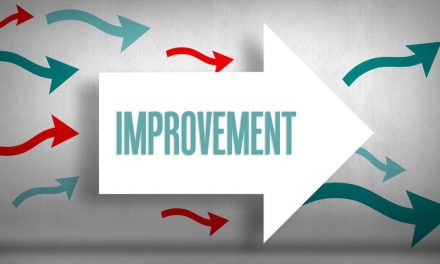By Jack Cumming
The business model for senior living is changing, even in the face of resistance from established entities. What does the future hold?
What Is
Historically, the business model for senior housing and senior living has been hierarchical. There’s a CEO at the top, reporting collectively to a board, with the CEO overseeing multiple layers of executives, regional officers, local managers, department directors, supervisors, employees, and at the bottom residents who’d best know their place. Originally, hierarchy was likely derived from the faith models which were commonly involved in early efforts at communal housing for the elderly.
The congregation of a church, or synagogue, or a cluster of faith communities, would come together to provide for those among them who were aging. Faith communities typically have strong, respected clerical leaders, so it’s not surprising that senior living is more hierarchical than it is communal. That pastoral leadership has been shifting toward central business leadership with a control and profit orientation.
Empowering People
Unlike most other businesses, though, senior living determines how people live, the freedom people have to find self-fulfillment, and the response to frailty and other losses as people decline toward life’s end. Putting corporate control, executive power, and profit before the self-worth of those controlled — residents and/or employees — is not a business model that is likely to persist. Still, senior housing is a capital-intensive undertaking, and capital demands a return. That’s evident in the bright-idea ventures seen on Shark Tank, and the huge investments required by senior housing make it much more compelling for senior living.
Imagine you’re like a friend of mine who starts by wondering:
My wife (age 84) and I (age 87) are in that inevitable conversation about whether to move from our … condo into a senior living place …. What thought process or analysis would you suggest in thinking about the subject generally, and about any particular organization?
My friend adds that he and his wife live “in a wonderful condo (just 1,600 sq ft) with the apartment, the storage room, the garbage room, and two car parking all on the same level.”
The triggering event [requiring a move to senior confinement] for many of our friends … has been sudden loss of the ability to climb stairs. The prior owner of our unit lived there for five years while in a wheelchair. We did have a friend suffer a cardiac incident in the apartment one night and the EMTs were there in minutes. We have a concierge doc, so we can get into see him any time we want.
What’s Missing
This is not an uncommon profile for affluent prospects who can afford the entrance and recurring fee pricing that is common for senior housing. The reference to EMTs is to the practice common in many senior communities of having CNAs respond to nocturnal crises. They often have little choice, in part due to liability exposure, but to call the EMTs themselves. That EMT (emergency medical technician) response is merely delayed by the senior housing living model.
That brings us to the limitations of today’s business model. It has clear challenges. It’s too expensive for many people. It takes away ownership and replaces it with corporate living. Care responses are often limited by law or practice and may not be what customers expect. Most people who are aging, prefer to stay put. They have to be “sold” on the idea of moving and downsizing. Those are all material drawbacks.
Heavyweight
A recent Senior Housing News article declared a new business model, “Heavyweight Health Care Investor Steps Up to Change Senior Living’s Business Model.” A close reading suggests that there is more drama in the title than in the undertaking. Still, the title reveals a growing perception of a need for something new. The market is shifting. My friend above clearly wants something, even if it’s not what the industry now offers.
The “Heavyweight” article alludes to adding a management services model to the “opco” (operating company) and “propco” (property company) models that have been commonplace in some industry sectors. I hope we can avoid calling management companies “mancos.” That might sound too sexist.
For-profit and not-for-profit approaches are essentially the same. Nonprofits similarly distinguish operating providers from capital providers. Central offices play the role of management companies but with hierarchical control concepts. For-profit holding companies are generally leaner than not-for-profit central offices but are also hierarchical.
What’s Needed
My friend, whose experience frames this article, doesn’t need much. All he and his wife really need is someone trustworthy to take appropriate action if the time ever comes that their needs change suddenly. That’s not a need to which the industry responds, unless you count those marketing businesses that intervene to garner referral fees for placing residents. These referral salespeople get paid by the provider, not the consumer, so the placement may not always be ideal for the person placed.
All of this suggests a need for a fourth kind of business beyond “propco” (profit first), “opco” (administration), and “manco” (management perspective). That would be “needco,” the kind of fiduciary-minded adult daughter prototype who puts the needs of her aging parents before her own needs. Those wonderfully giving people are rare, and businesses that accept fiduciary responsibility for the needs of others are also rare.
Breaking With Convention
What does this say about the emerging business model? It will put customers first, before conventional wisdom, before profit maximization, before executive ambitions. If some concept evolves to provide better living for all people, regardless of age, beyond the ticky-tacky mediocrity of convention, it will have the potential to upend everything to become the new norm.
That requires, though, not just having the idea, but also showing the world why lives are better. That’s a tall order. It’s a promising future. Senior living is best positioned to make it happen. We can do better, and doing better can come with great rewards.








